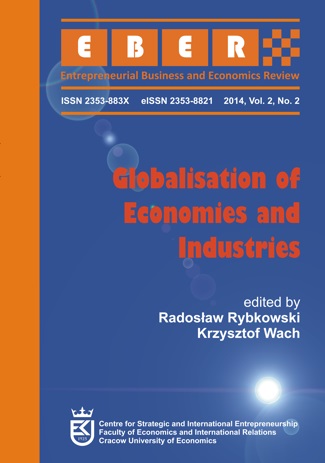The V4: a Decade after the EU Entry
The V4: a Decade after the EU Entry
Author(s): Eduard Nežinský, Elena FifekováSubject(s): Economy
Published by: Uniwersytet Ekonomiczny w Krakowie
Keywords: growth accounting; catching-up rate; data envelopment analysis; Malmquist productivity index
Summary/Abstract: The objective of the paper is to give a picture of the sources of economic growth in the V4 countries during the decade following their EU entry and to crosscheck the results obtained by parametric and non-parametric approaches. Growth accounting technique is used to depict dynamics of the V4 countries evolution since 1995 up to 2013. The poor post-crisis performance reflected in TFP indicator is in line with the result of the absence of technological progress obtained by data envelopment analysis. Sources of the economic growth are identified by growth accounting based on Solow-Swan model. Non-parametrical part employs an SBM measure of efficiency in Data envelopment analysis as an application of linear programming optimization. Main findings include determining faster-than-average economic growth of the V4 followed by a considerable decline both in total factor productivity and in catching-up rate in the after-crisis period. DEA approach reveals excessive use of labor in all of the V4 countries and finds almost negligibletechnological change. The main concern for economic policy in the V4 as well as the entire EU continues to be tackling unemployment and facilitating factors´ productivity by structural reforms. The paper makes use of parametric and non-parametric approaches with a view to cross-checking the results obtained on the technological change within the EU at large and across the V4 countries in particular.
Journal: Entrepreneurial Business and Economics Review
- Issue Year: 2/2014
- Issue No: 2
- Page Range: 31-46
- Page Count: 15
- Language: English

